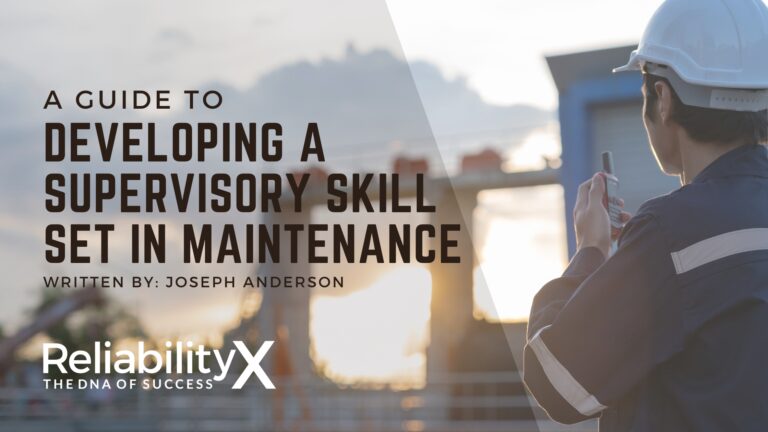Mastering Maintenance Leadership: The Blueprint for Strategic Business Planning
By: Joseph Anderson
In the realm of maintenance leadership, strategic business planning isn’t an option; it’s a prerequisite for success. The dynamic interplay of technology, industry standards, and organizational needs demands a clear roadmap for navigating the complex landscape of maintenance and reliability. Here, we delve into the significance of maintenance leadership in business planning and how it paves the way for optimal asset management and operational excellence.
The Fusion of Leadership and Strategy
Maintenance leadership transcends the role of maintaining equipment and preventing breakdowns. It requires a strategic vision that aligns with the organization’s overarching goals. Successful maintenance leaders operate as change agents, driving innovation and fostering a culture of continuous improvement.
Components of Maintenance Leadership Business Planning
- Asset Management Strategy: At the core of business planning, maintenance leaders design asset management strategies that encompass the entire lifecycle of equipment. This includes acquisition, operation, maintenance, and disposal. Strategic asset management reduces costs, extends equipment life, and maximizes ROI.
- Maintenance Strategies: Leaders establish maintenance strategies that balance preventive, predictive, and corrective maintenance. They determine the most efficient way to keep assets operational and perform cost-benefit analyses to make informed decisions.
- Reliability Engineering: Reliability engineering focuses on designing and implementing systems and processes that maximize asset reliability. Maintenance leaders integrate reliability engineering principles into their business plans to optimize asset performance.
- Safety Protocols: Ensuring the safety of personnel is paramount. Maintenance leaders develop and incorporate safety protocols into business plans to protect employees and assets, reducing incidents and related costs.
- Data-Driven Decisions: Maintenance leaders leverage data analytics to make informed decisions. They collect data from various sources, including sensors and condition monitoring systems, to predict failures and optimize maintenance schedules.
The Impact of Maintenance Leadership on Business
Effective maintenance leadership has a far-reaching impact on business operations:
- Improved Asset Reliability: Strategic business planning ensures that assets are reliable and consistently meet performance standards. This minimizes downtime and maximizes productivity.
- Cost Reduction: By preventing breakdowns and optimizing maintenance schedules, maintenance leaders reduce operational and maintenance costs. Efficient resource allocation and inventory management contribute to cost savings.
- Enhanced Product Quality: Reliable equipment translates to consistent product quality. Quality assurance is integral to business planning and maintenance leadership.
- Energy Efficiency: Maintenance leaders focus on optimizing asset performance, which often leads to energy savings and reduced environmental impact.
- Compliance and Safety: Strategic business planning includes compliance with safety standards and regulations. Maintenance leaders promote a safe work environment and minimize risks.
Incorporating Technology
Maintenance leadership business planning relies heavily on technology, including:
- Condition Monitoring Systems: These systems continuously assess the health of equipment, enabling predictive maintenance and early fault detection.
- Computerized Maintenance Management Systems (CMMS): CMMS streamlines maintenance workflows, asset tracking, and reporting, facilitating efficient planning.
- IoT and Industry 4.0: The integration of IoT and Industry 4.0 concepts provides real-time data and insights for predictive maintenance.
- Data Analytics: Advanced analytics help maintenance leaders derive actionable insights from vast amounts of data.
The Way Forward: Continuous Improvement
Maintenance leadership business planning is not static; it evolves to adapt to changing needs and technologies. It encompasses a culture of continuous improvement, where leaders and teams collaborate to refine processes and enhance performance continually.
In conclusion, maintenance leadership and strategic business planning are inseparable partners in the pursuit of operational excellence. Effective planning and leadership drive reliability, safety, and cost-efficiency, positioning an organization for long-term success. With a strategic mindset, a commitment to innovation, and the embrace of technology, maintenance leaders chart the course to a future where assets remain robust, operations remain efficient, and quality remains uncompromised.






